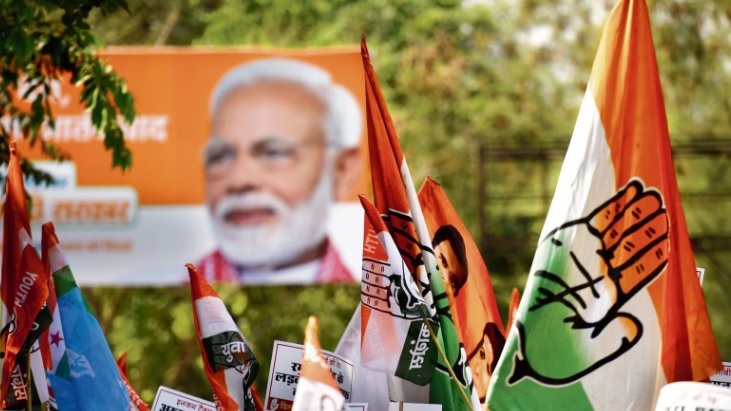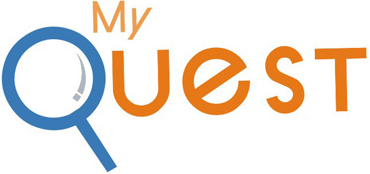
Social Media Influencers: India’s Modern Election Advocates
Digital Democracy: How Parties Court Voters from WhatsApp to Influencers in 2024 Lok Sabha Elections
As India prepares for the world’s largest democratic event, political parties are increasingly turning to social media influencers and messaging platforms like WhatsApp to shape voter opinions, according to reports from news agency PTI. The Election Commission announced yesterday that the 2024 Lok Sabha elections will be conducted in seven phases, commencing on April 19 and concluding on June.
How Parties Are Wooing Voters?
The BJP is endeavoring to connect with voters by dispatching personalized ‘Letters from the Prime Minister’ via WhatsApp, a platform with over 500 million monthly active users in India. These letters spotlight the accomplishments of the Narendra Modi government while also soliciting feedback from voters.
The party introduced the website ‘My First Vote For Modi,’ enabling visitors to commit to voting for Modi and share a video explaining their decision. The platform also features numerous short videos showcasing the developmental initiatives undertaken by the NDA government.
Conversely, the Congress operates a WhatsApp group led by Rahul Gandhi, where the leader reportedly engages with individuals and addresses their queries.
WhatsApp information dissemination is monitored at the district level to ensure widespread outreach and accurate messaging to the party’s voter base.
“Whichever political party has higher WhatsApp groups under its banner can communicate faster and better with the voters. It helps them to highlight their achievements instantly with a large user base and influence the voters by drawing parallels with the opposition,” Amitabh Tiwari, an election analyst and commentator, said.
According to Tiwari, Facebook, once the most preferred platform for social media campaigning, has seen a downslide due to many restrictions on advertisements on political pages.
Facebook boasts 366.9 million users according to Statistica, a data-gathering and visualisation platform.
“Parties opt for social media platforms which help them connect with the masses instantly without much restrictions and have a large user base. There are many other platforms like Instagram or Twitter, which cater to a specific audience and have different formats,” he said.
According to the data from the Election Commission, the Bharatiya Janata Party spent a total of ₹325 crore for media advertisement (print and electronic, bulk SMS, cable website, TV channel, etc) during the 2019 Lok Sabha polls, while Congress incurred an expenditure of ₹356 crore.
Post-Pandemic boom in social media
The way that people use social media as an information tool has changed dramatically since the COVID-19 outbreak, according to Ankit Lal, the founder of Politique Advisor and the former head of the Aam Aadmi Party’s IT Cell.
“Many political parties now adopt a digital-first strategy for their poll campaigns to connect with the voters who heavily depend on social media to get information. Social media influencers have become another important medium through which parties try to influence the floating audience of those who do not vote but engage in consuming the narratives,” he said as quoted by PTI.
Social Media Influencers Take The Lead
To reach a younger audience, a number of political figures have made appearances on well-known social media influencers’ YouTube channels in recent months. One such example is Podcaster Ranveer Allahabadia, who has over 7 million YouTube subscribers and has seen BJP officials such as S Jaishankar, Smriti Irani, Piyush Goyal, and Rajeev Chandrasekhar on his show.
Congress leader Rahul Gandhi also joined Kamia Jani, founder of Curly Tales, a travel and food video podcast, for a candid conversation over a meal. In the 2014 general election, BJP had the first mover’s advantage in utilising social media for election campaigning as many leaders were not there on these platforms, Amitabh Tiwari said.
“Because others (opposition) didn’t realise the importance of social media for campaigning then, the ruling party was able to create more impact,” he said as quoted by PTI.
Speaking of leader joining X (formerly Twitter), Congress leader Rahul Gandhi joined X in 2015 and has 25.1 million followers while PM Modi, who joined X in 2009, is followed by 96.3 million people.
Effect Of Social Media Campaigning On Poll Results
Explaining the importance of social media campaigning on poll results, Lal said, “With the internet penetration of 40 per cent, in an assembly constituency of an average of two lakh people, it is possible to influence 75,000 to 80,000 people through digital mediums. Even a difference of 5,000 votes is a good win-loss margin in any assembly election.”
Other analysts, however, have their doubts about the power of social media to turn people into voters.
It requires more analysis and research, they say.
Chambi Puranik, professor of political science and a poll analyst, said election campaigns on social media may not influence the opinions of traditional voters or party supporters who have their loyalties fixed.
He said loyalty factors such as caste and local affiliation weigh far more for traditional voters as the elections come closer. “The popularity, credibility and charisma of the party face contesting in the election also swing the voters.”
The Need For Regulations
Meanwhile, highlighting the need to regulate social media campaigning by parties, former chief election commissioner of India SY Quraishi said that the EC should speak to tech companies to strengthen their mechanism to take down reported posts that violate the rules of the poll body.
Do Electoral Bonds Make A Difference?
Tiwari observed that the money spent by parties for campaigns does not necessarily impact who wins or loses.
Various factors contribute here, including the party’s face, public image, and issues raised by the party, among others, he said.
On Thursday, the Election Commission published data on electoral bonds bought between April 2019 and February 2024.
According to the data, the BJP received the highest contributions, ₹6,566 crore or 54.77 per cent, through the bonds, followed by the Congress, which received ₹1,123 crore or 9.37 per cent of the total.



